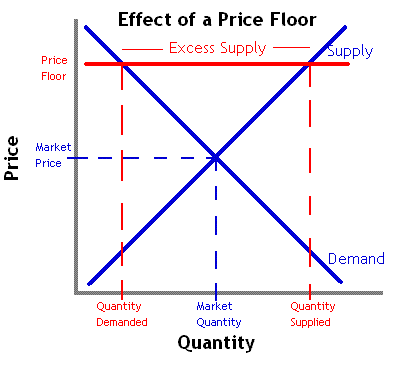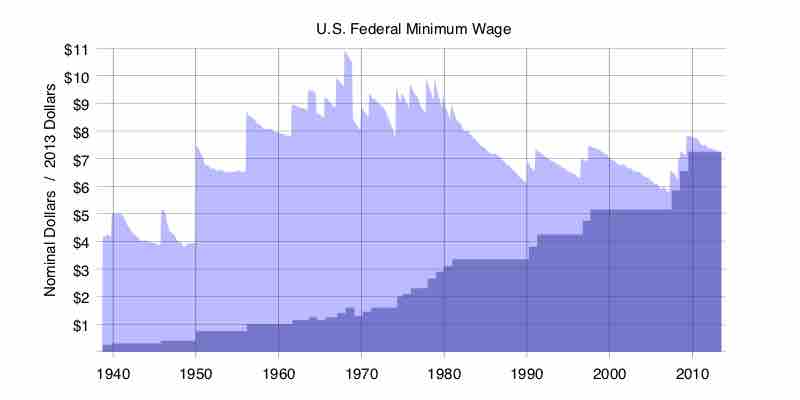A price floor is a price control that limits how low a price can be charged for a product or service. Generally floors are set by governments, although groups that manage exchanges can set price floors as well. The purpose of a price floor is to protect producers of a certain good or service. By establishing a minimum price, a government seeks to promote the production of the good or service and ensure that the producers have sufficient resources to go about their work.
For a price floor to be effective, it must be greater than the free-market equilibrium price. This is the price established through competition such that the amount of goods or services sought by buyers is equal to the amount of goods or services produced by sellers. It is also the price that the market will naturally set for a given good or service. If the price floor is lower than what the market would already charge, the regulation would serve no purpose. Since the price is set artificially high, there will be a surplus: there will be a higher quantity supplied and a lower quantity demanded than in a free market . As a result, a government will generally do significant research into the current market conditions for a good or service before setting a price floor.

Price Floor
If a price floor is set above the equilibrium price, consumers will demand less and producers will supply more.
An example of a price floor is the federal minimum wage. In this case the suppliers are employees and employers are the consumers. The federal government has established a price that all employers must pay their workers. Obviously employers can pay more than that amount, but they cannot pay less. The purpose of setting this floor is to ensure that all employees make enough money from their jobs to provide for their basic needs.

History of the Federal Minimum Wage
History of the federal minimum wage in real and nominal dollars. The federal minimum wage is one example of a price floor.